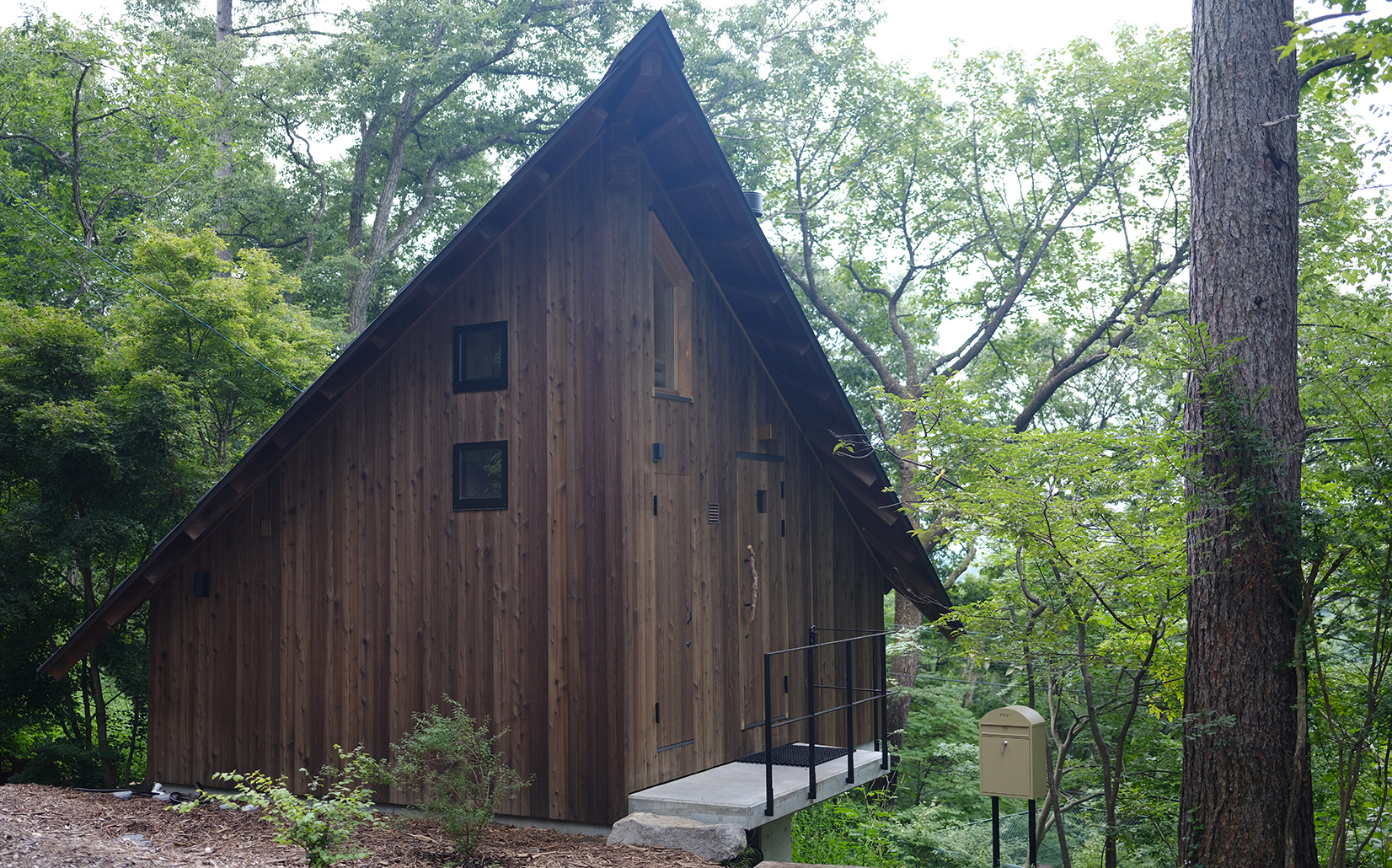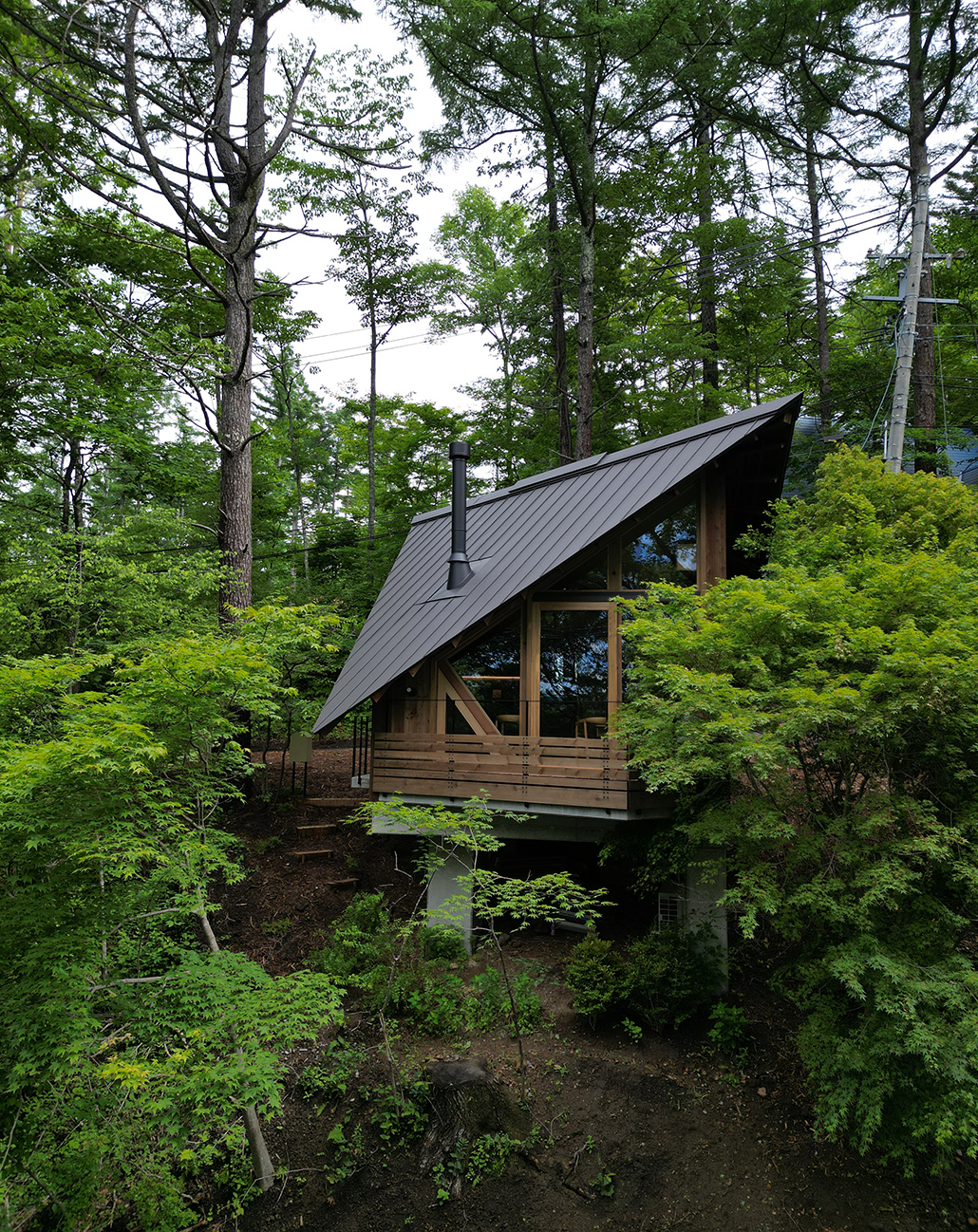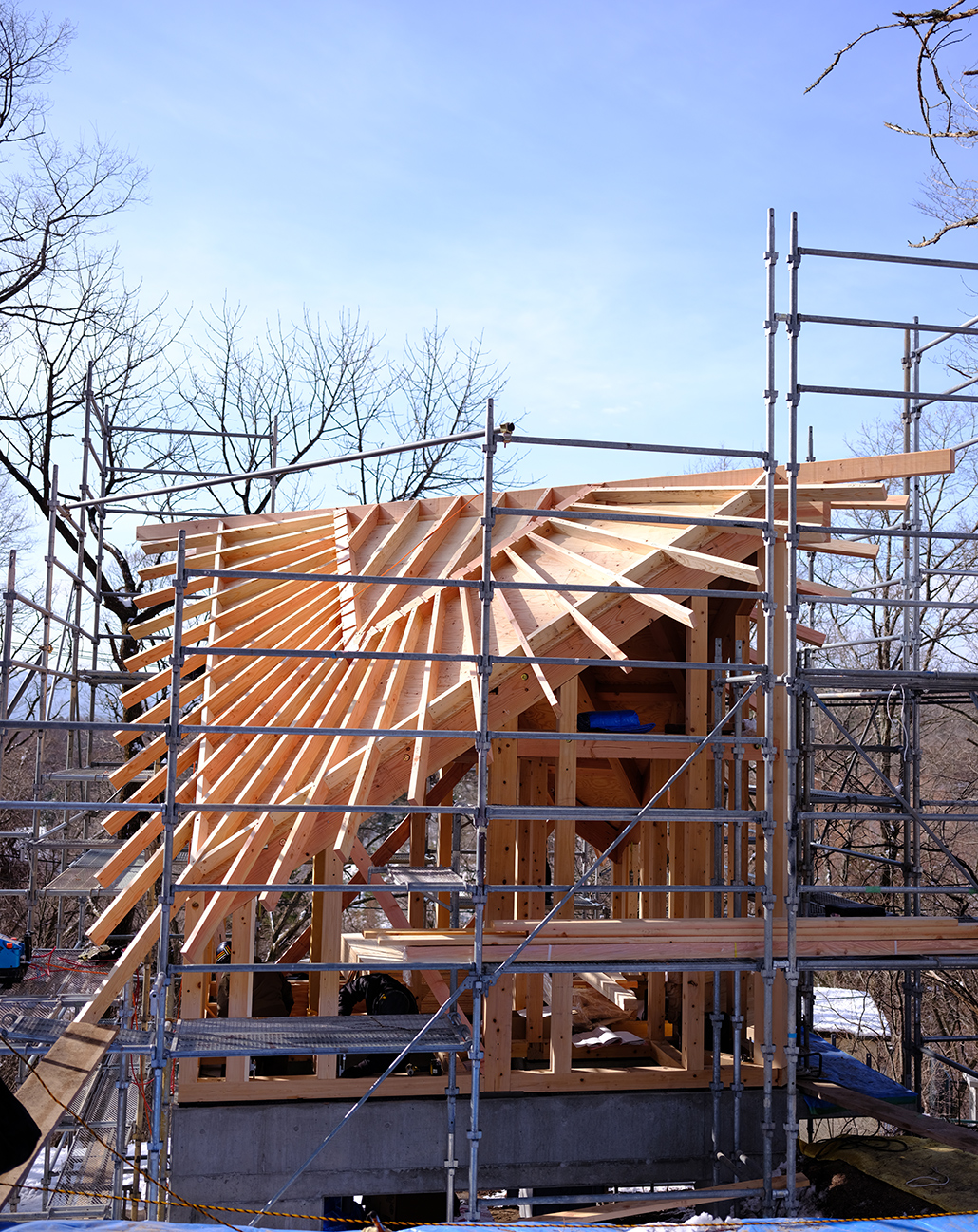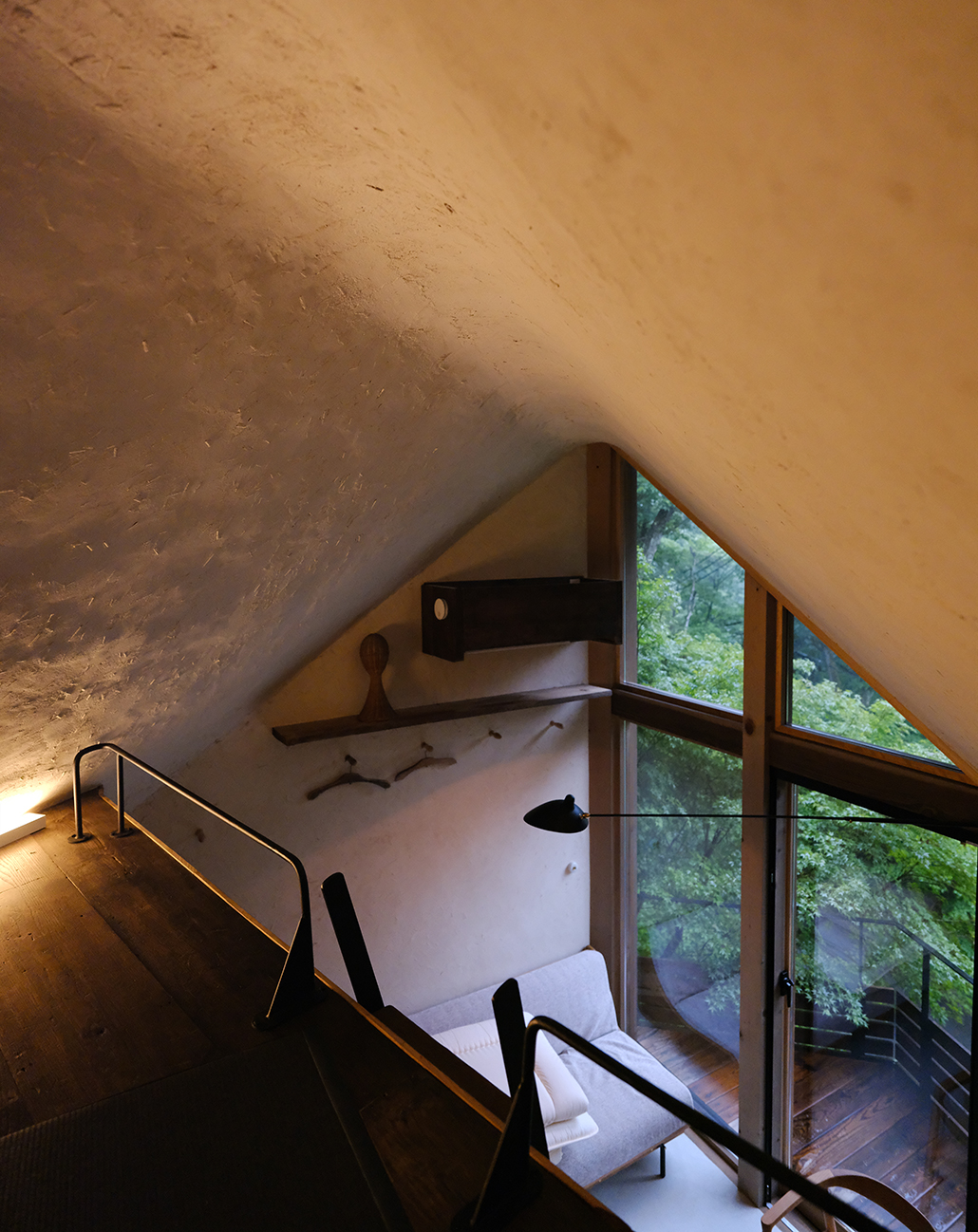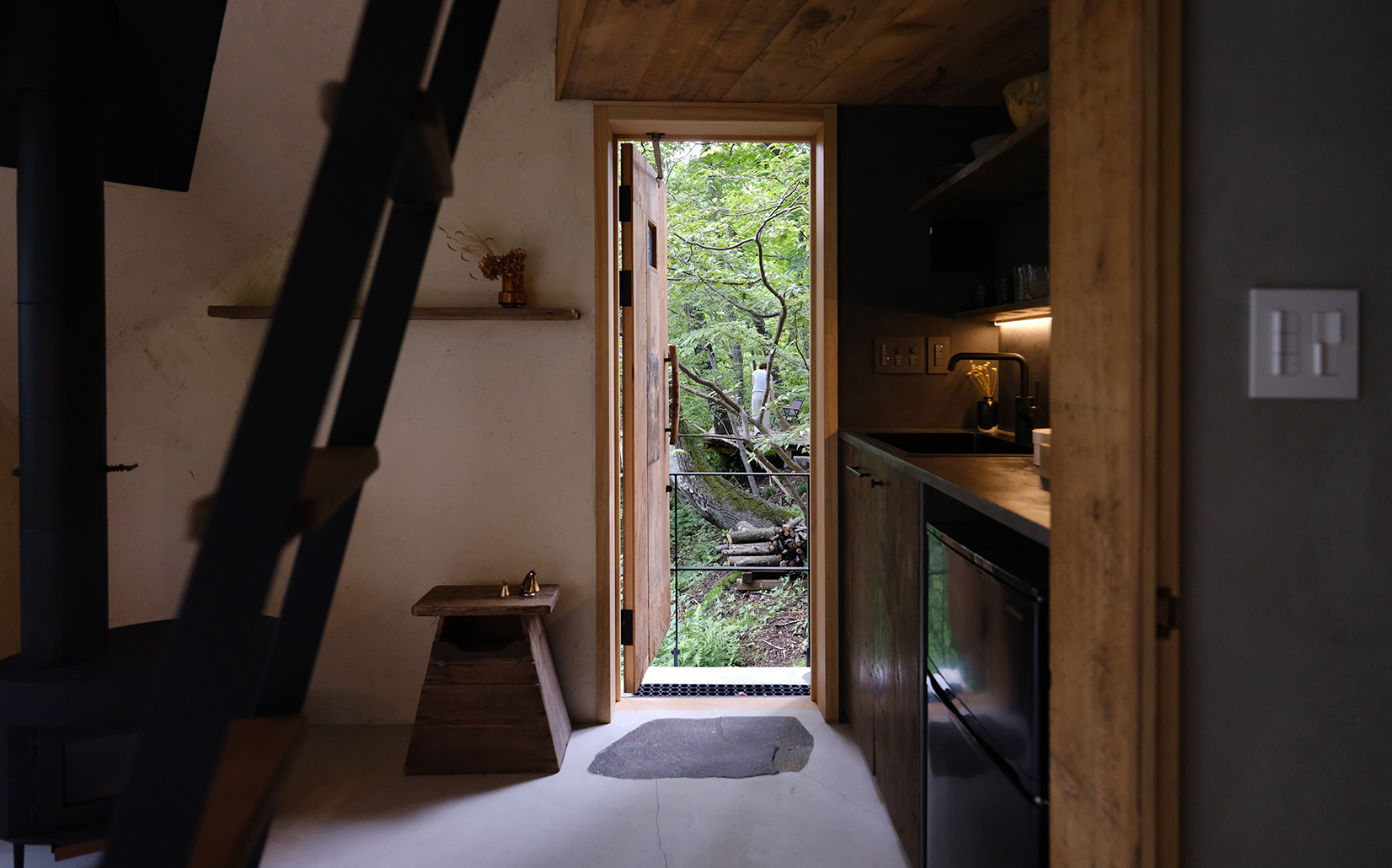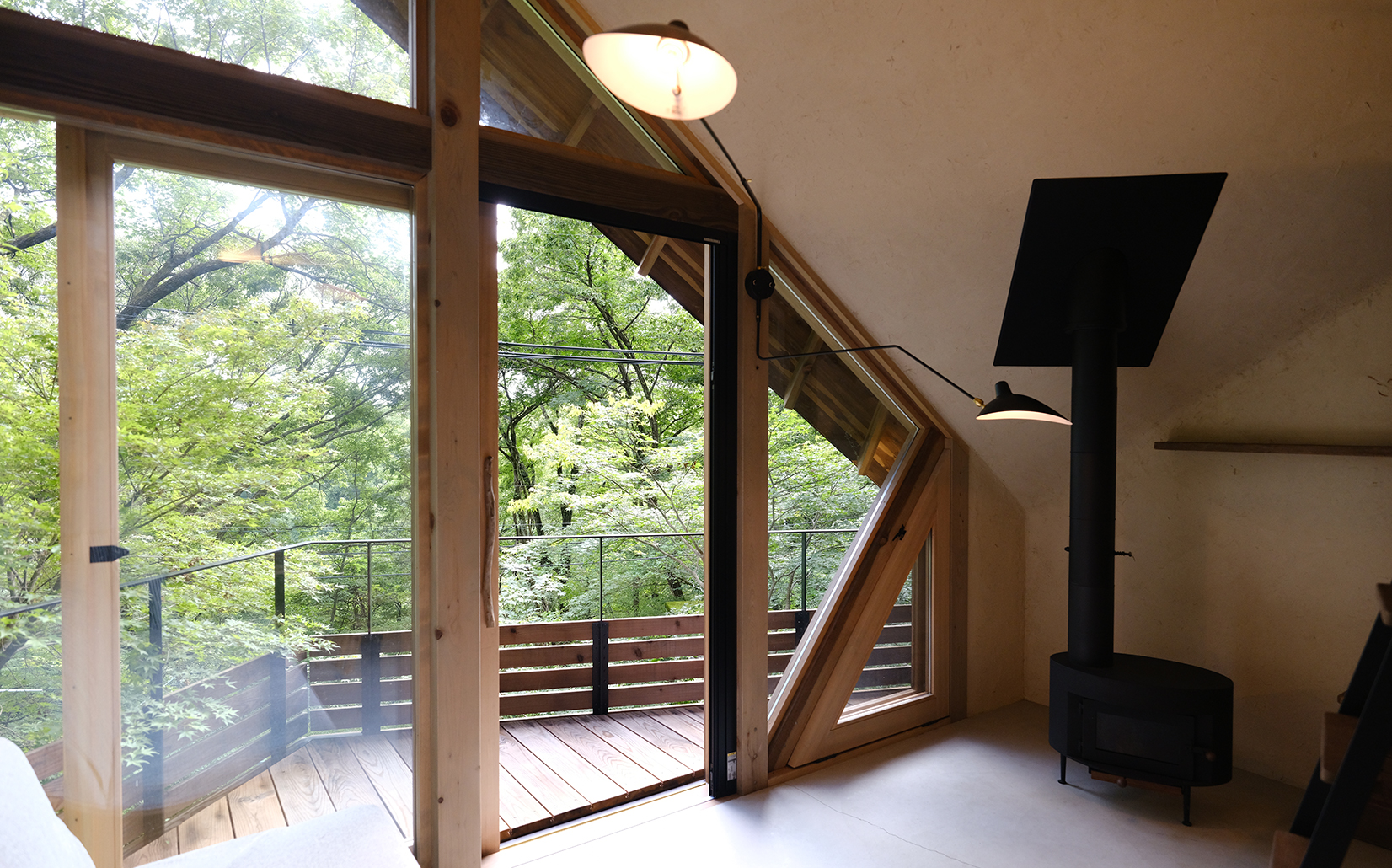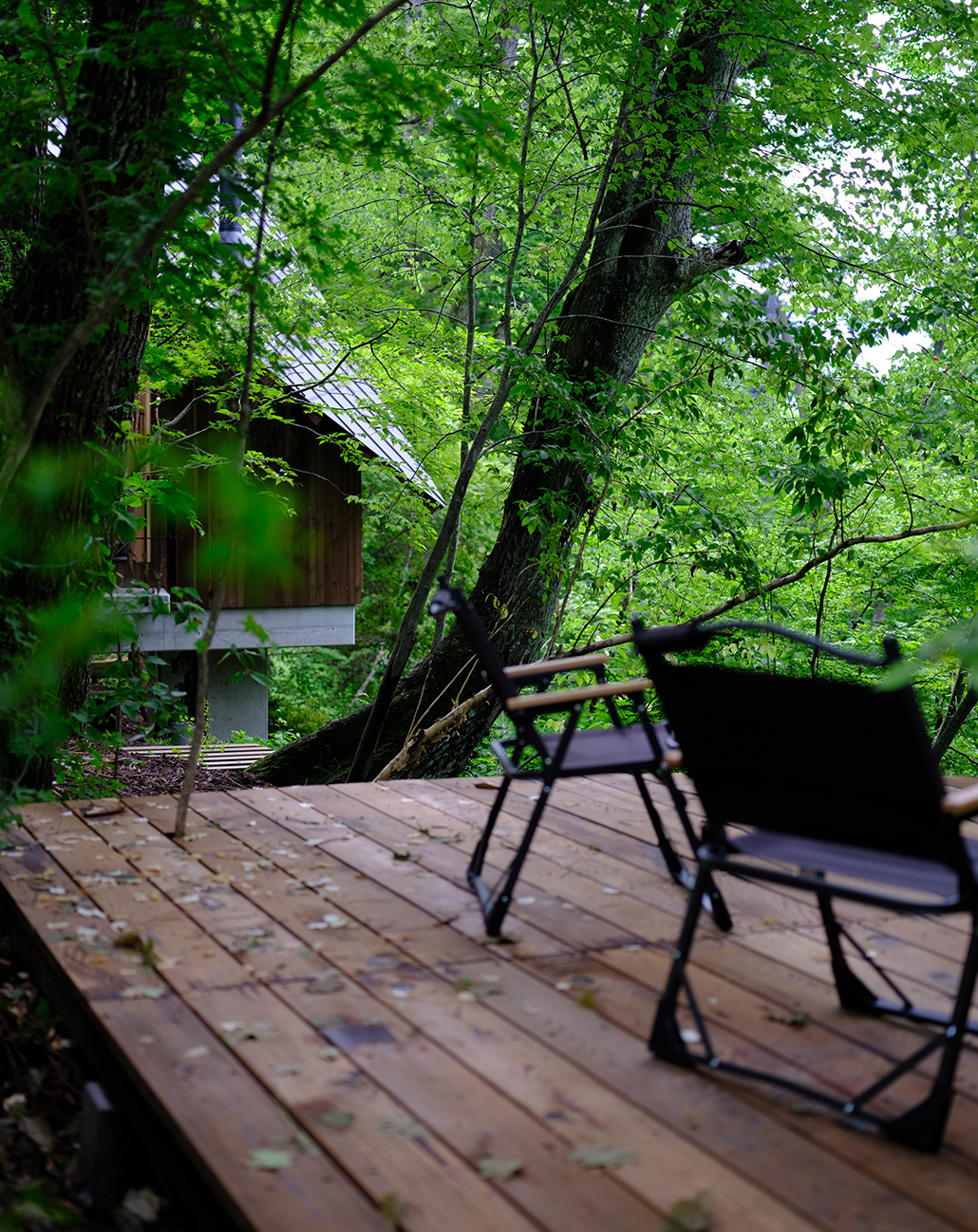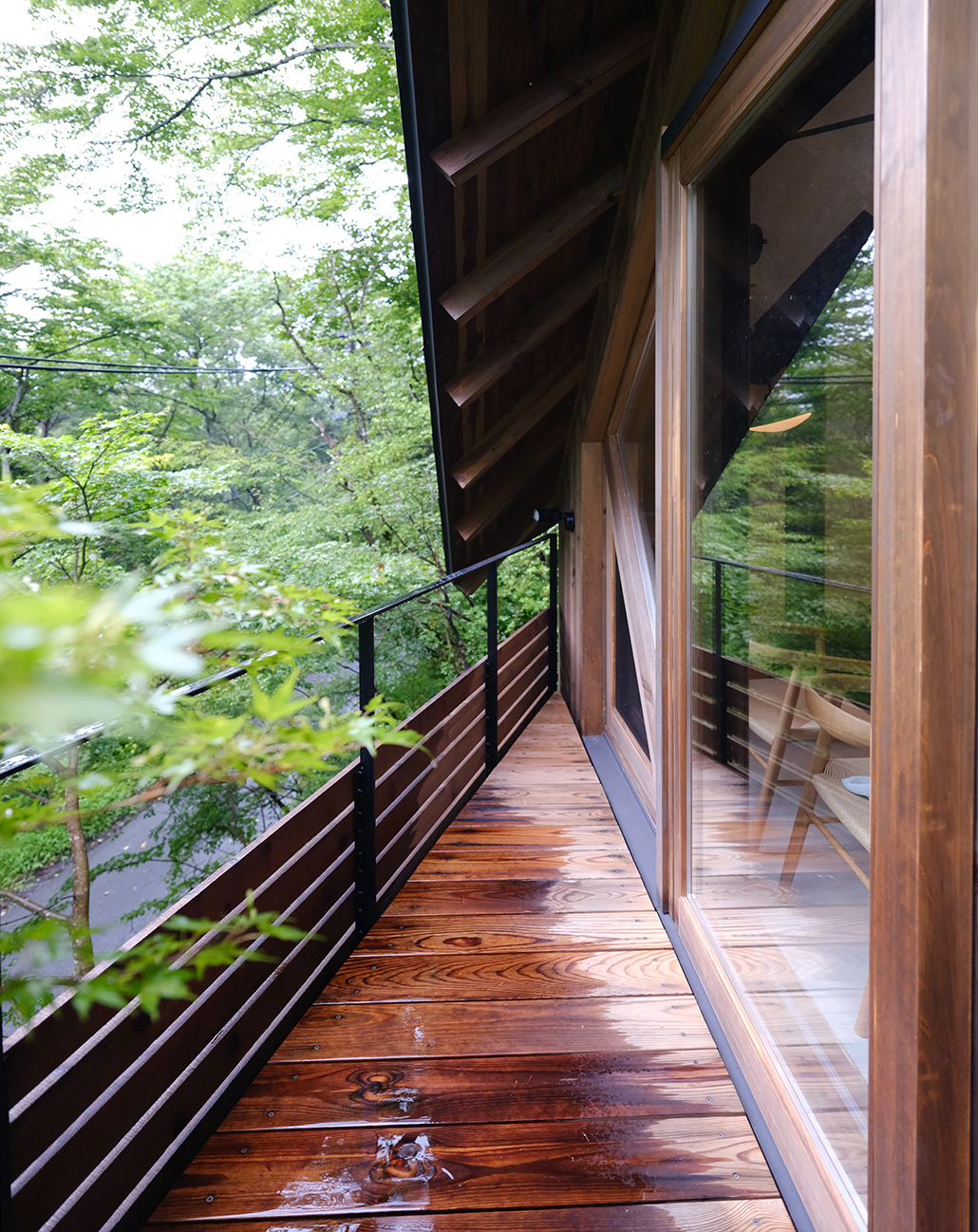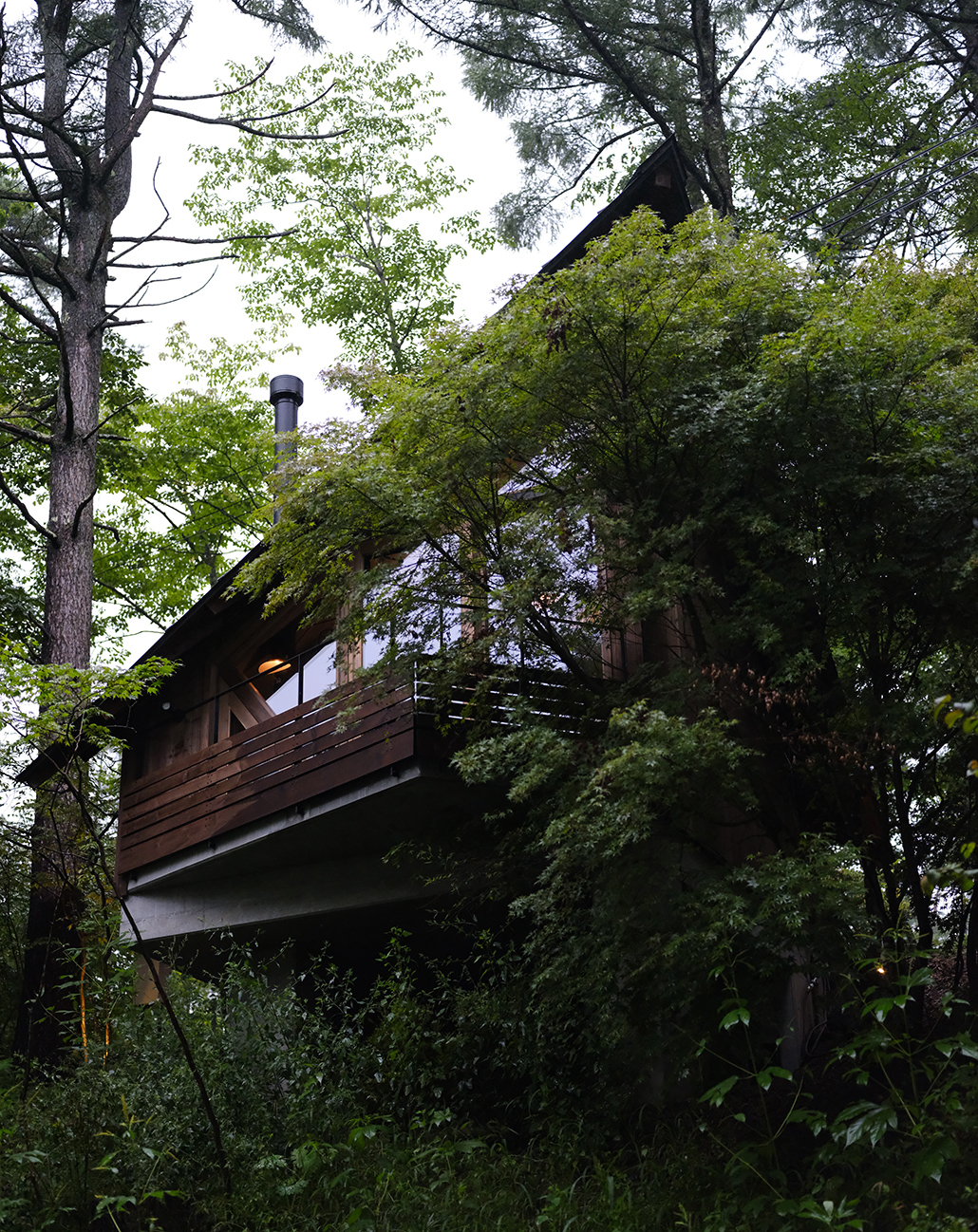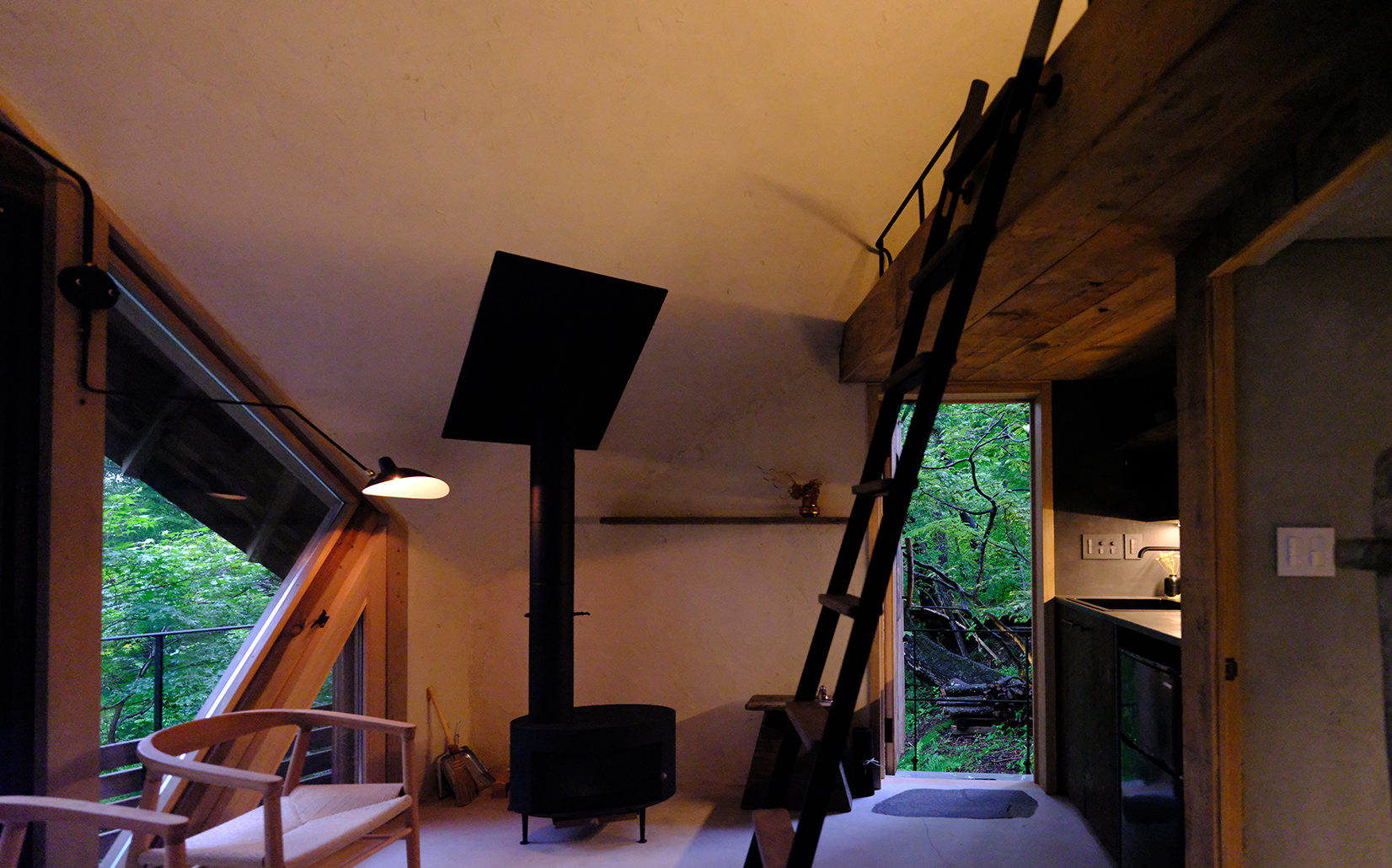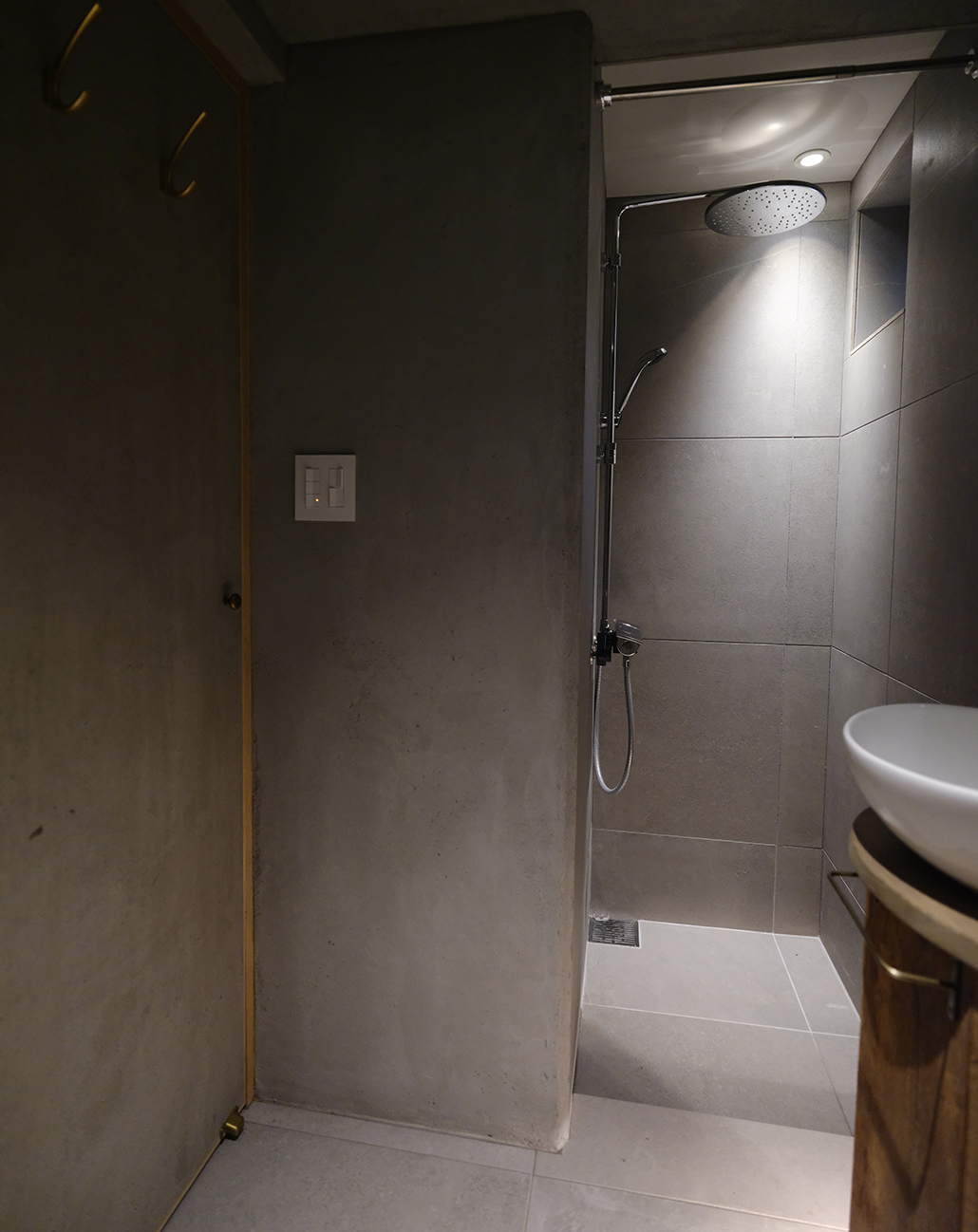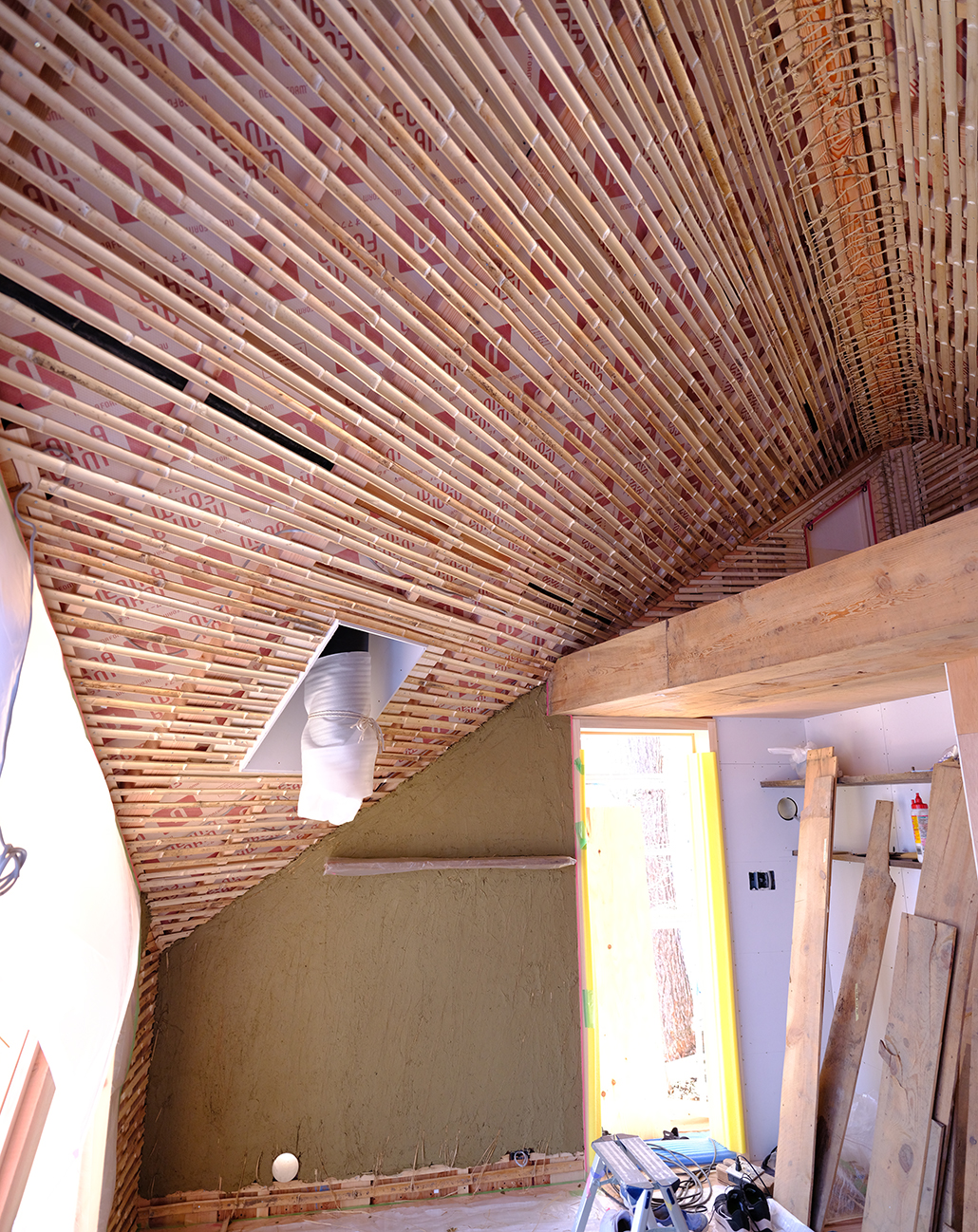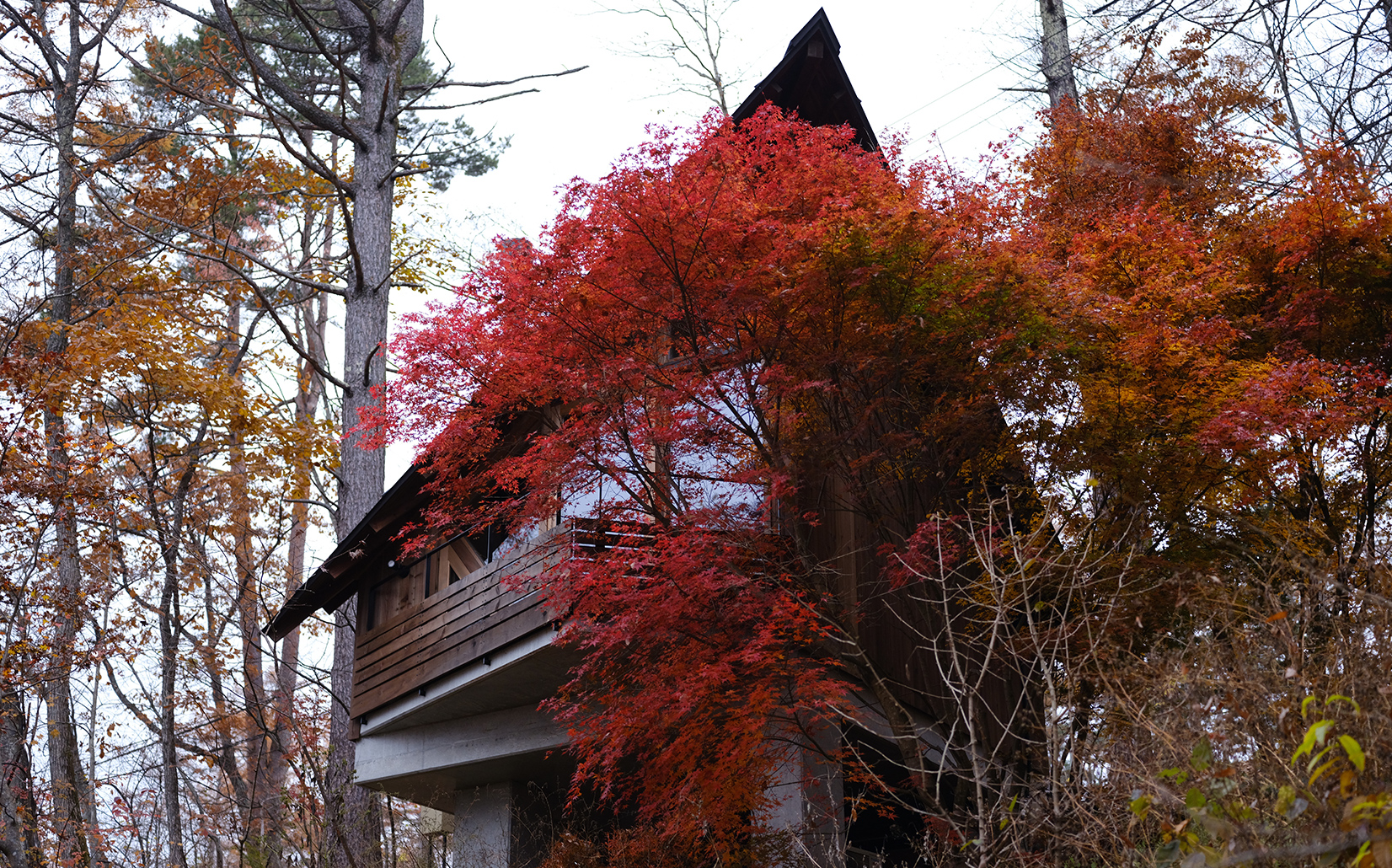“musasabi-an” HUT IN KARUIZAWA"musasabi-an" 軽井沢の山荘
Villa
Residential
Architecture
- 軽井沢町 Karuizawa
- 2024
トイレやシャワー、キッチンも備えた、森で生活するための最小限住宅である。3m四方の「方丈庵」より1mずつ大きく、「ヒヤシンスハウス」より1畳ほど広い4m四方のこの最小限住宅は、土壁などの伝統的な職人技術と、BIM(Building Infomation Modeling)による空間・構造シュミレーションにより検討された開放空間とを融合させている。地元の材料と地域の職人技術を活かした「地産地消の建築」とし、最小限のボリュームで最大限の広がりを獲得することをめざした。BIMシュミレーションならではの非標準的な立体空間が、施工を困難にしているように見えた。しかし、プレカット工場との連携、伝統的な職人の技術と経験・柔軟性が、デジタルな3D設計を現実の建物に変換することを可能とし、職人技術はより引き立てられることとなった。また、壁は地域の左官職人と共に建て主が土壁と漆喰を施工し、薪ストーブはこの建物のために安曇野のストーブ職人金澤図工さんと共にデザインし設えている。そのほかのペグやハンドル、ツマミやガラリなどは建て主の手作りで出来ている。「地産地消の建築」は、地域材や地元職人の安心感と経済循環、輸送エネルギーやコストの削減など多くの「心地よさ」を建築主や関係者、地域にもたらす建築となり得たのではないだろうか。
It is a minimalist dwelling designed for living in the forest, equipped with a toilet, shower, and kitchen. This 4×4 m minimal house—1 m larger in each dimension than the 3×3 m Hōjō-an and roughly one tatami mat larger than the Hyacinth House—fuses traditional craftsmanship, such as earthen walls, with open spaces developed through BIM (Building Information Modeling) simulations of spatial and structural behavior. Designed as a “locally sourced and locally built” architecture that utilizes regional materials and local craftsmen, it aims to achieve maximum spatial expansiveness within a minimal volume.
The unconventional three-dimensional spaces enabled by BIM simulations initially appeared challenging to construct. However, collaboration with precut factories, combined with the skill, experience, and flexibility of traditional craftsmen, made it possible to transform the digital 3D designs into a tangible building, further highlighting the craftsmanship. In addition, the walls were finished collaboratively by the owner and local plaster artisans using earthen plaster and lime, and the wood-burning stove was custom-designed and crafted for this house in collaboration with stove artisan Zuko Kanazawa from Azumino. Other elements such as pegs, handles, knobs, and louvers were handmade by the owner.
This approach to “locally sourced and locally built” architecture provides multiple forms of comfort—not only the reassurance and economic circulation offered by regional materials and local artisans, but also reductions in transport energy and costs—benefiting the client, collaborators, and the broader community alike.
